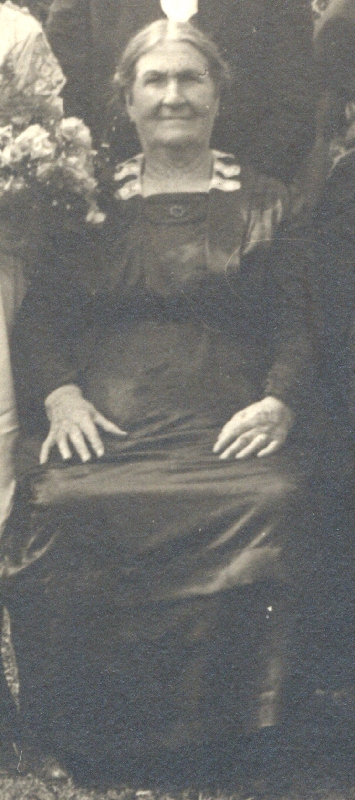MARY HARRIGAN
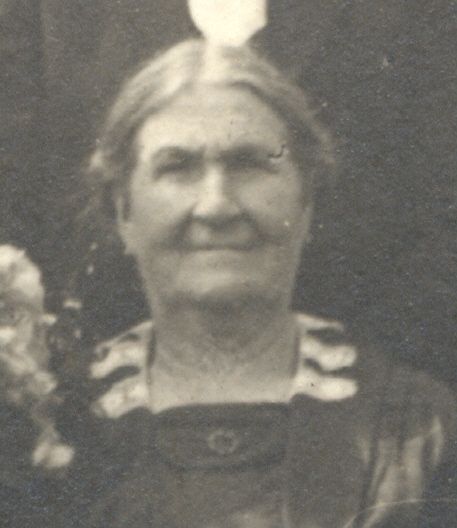
Mary Harrigan in 1921

Baptism record for Mary Harrigan in Tipperary parish
Tipperary
is
an old town, nearly 800 years old, in fact. The Harrigans are
shown in tax records in Bohercrow
townland, just outside of Tipperary town.
Mary
landed
at Castle Garden, New York in 1865, at the age of 17. There is
no record of her entering the United States. Her daughter Anne
said, "She is shown as lost at sea, because she slipped away
over the fence with some cousins, named Irwin that she saw
accidentally. They gave her a glorious week while her sister
was looking for her. Finally found, she went with her sister,
Anne (Johanna) Lynch, to Clinton, Iowa. She worked very hard,
mainly for thanks, so ran away to Chicago, to a cousin, Mrs.
Lawson, on Randolph Street."
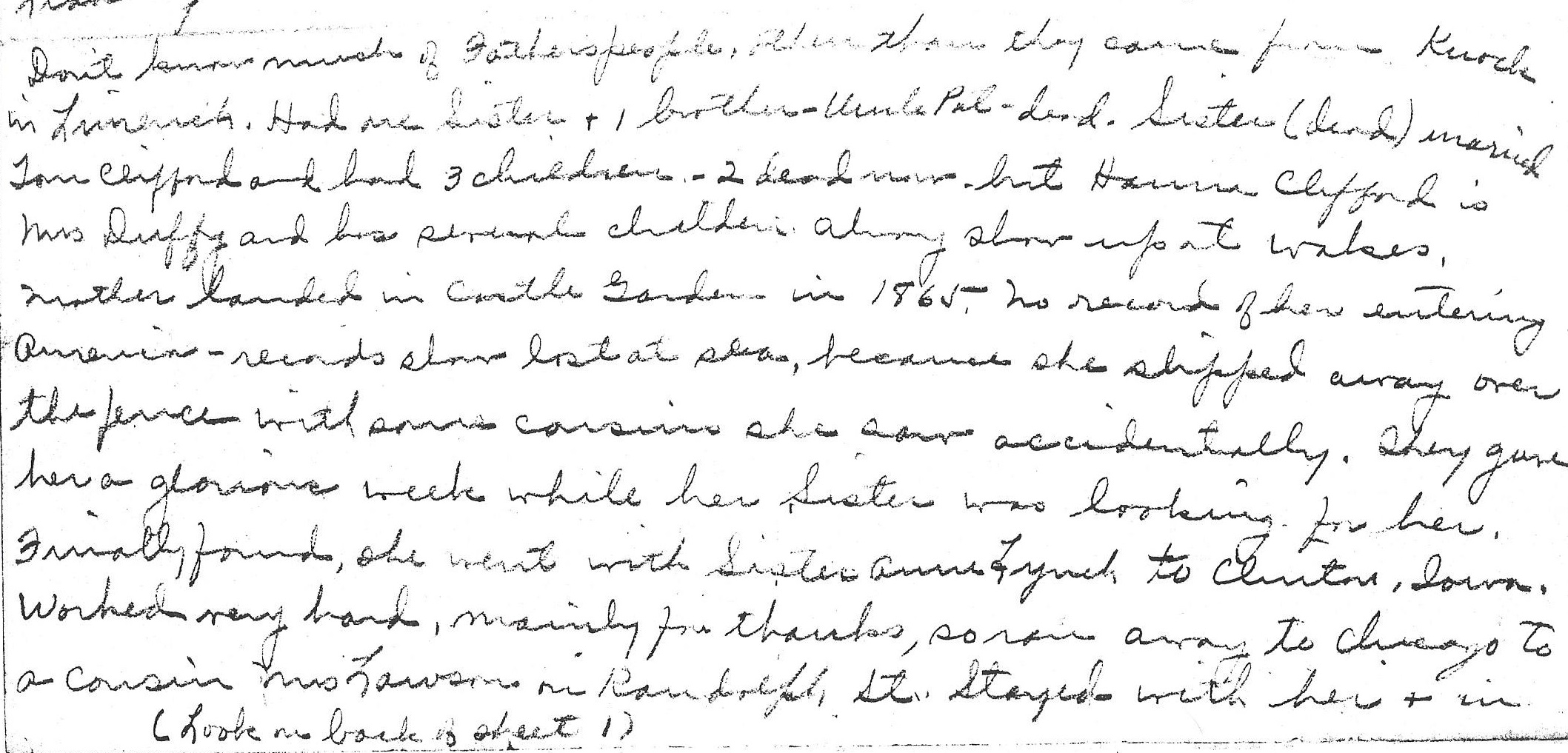
Letter from Anne Carey Rossing, Mary's daughter, circa 1941
Mary stayed with her, and in a year met and married John Carey,
at the age of 18 on 13 July 1866 in Chicago. (Mary's daughter,
Anne Carey Rossing, reported that "after Mary died it was
said that Mary Harrigan certainly made a big step down when
she married John Carey, for she was Irish quality".) Mary
had fourteen children. Twelve children lived past infancy. Mary
was a town girl, and John was from a farming family.
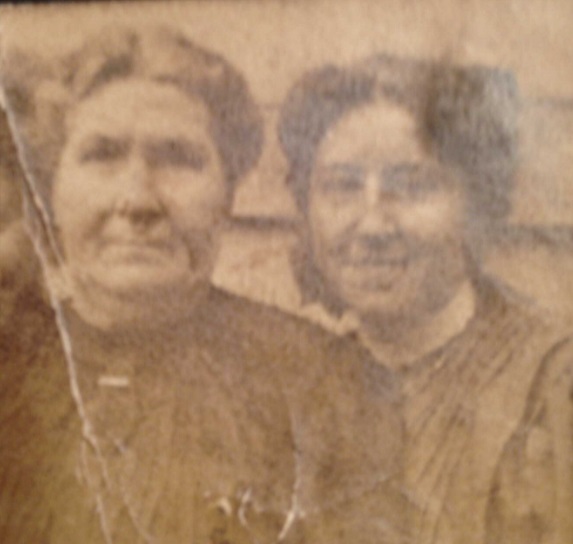
Mary Harrigan Carey and her daughter Anne
In
1897 John Carey died, leaving Mary a widow at the age of 47. She
moved to 123 Lytle, and then by 1908 bought a home at 1923 S. Central Park, in
Chicago. Her grandson, Harvey Rossing, remembers her as being "very
much the mistress of the household, and really the person who
ran it, even though, at one time three of her daughters lived
there with her, as well as a son, a son-in-law, and three
grandchildren."
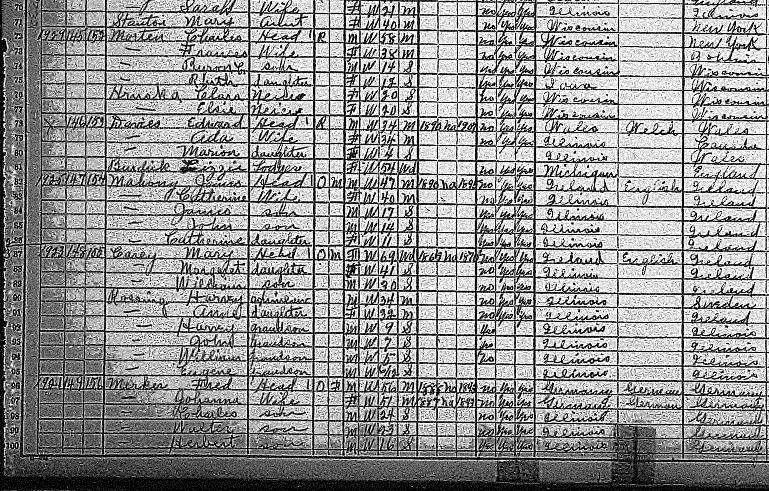
1920 census
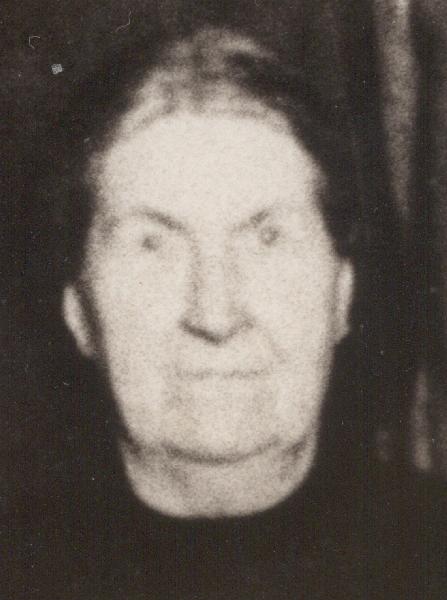
Mary's
granddaughter
Dolores Carey Gonczo remember some of the events associated with
Mary's death: "She had a heart problem. Her doctor was Dr.
Hamlin, and he gave her some medication. She asked him: "Will
this give me a new heart?" When he replied that it wouldn't,
she refused to take the medicine. According to Anne, a few
minutes before she passed away having been in a coma for quite
some time, she suddenly sat up, opened her eyes, and said,
"I'm coming, Bill". Whether this is some of Anne's Irish
"folklore" or the truth, I do not know, but I do remember that
as a child, it made quite an impression on me." Mary died
November 23, 1923, at the age of 74. She was buried in Calvary Cemetery on November
26, 1923.
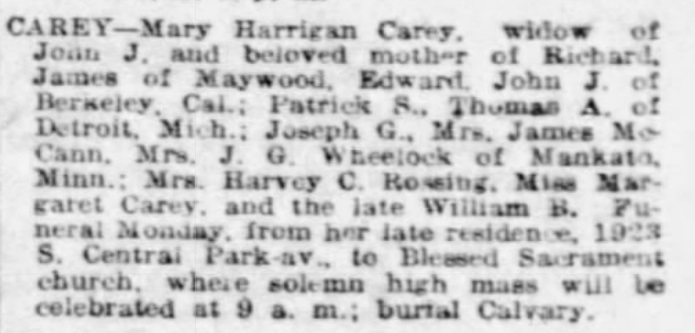
Obituary
notice
of Mary Harrigan Carey (Chicago Daily Tribune, Saturday,
November 24, 1923):
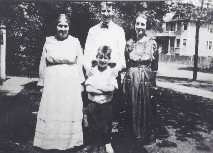
Mary Harrigan Carey, son James Carey,
granddaughter Mae Carey Johnson,
and great-grandson Roland Johnson - four generations.
by Dolores Carey Gonczo
"I
spent a lot of time with Grandma Carey, and she was truly an
"Irish Matriarch". She ruled — and I do
mean ruled — from her Morris chair. She was a very heavy
woman, and she sat in that chair and dictated what each one of
her children were to do, regardless of the fact that they were
married and had children. One of the events I remember from
early childhood was when Grandma decided she was going to curb
the cemetery lot at Calvary Cemetery. She dictated that each
one of the boys were to donate $10 towards it, and each of the
girls $5. When my mother asked her why the girls (who were
married) only donated $5, her curt answer was "because her
husband is a stranger!"
Grandma
ruled
the roost - every year all the boys that
worked, married or unmarried, bought a new front parlor
carpet, and the year-old one went into the back parlor. The
Carey boys had to be in by 9 p.m., and the man next door used
to set his watch by the boys rounding the corner and sprinting
on home.
Another
event
I remember (or was told about) is that she dictated that each
one could only get married in chronological order. But my
Father and Mother (who was German) decided to get married
before John and Mae Hickey were married (John was two years
older than my Dad), and that, coupled with the fact that my
father was marrying a German girl, Grandma came to the wedding
- but, she came in after the wedding party had gone down the
aisle and sat in the back pew. Hence, she was the first
one to congratulate them! She would never give the neighbors
anything to talk about.
She
was
a person of intense likes or dislikes where people are
concerned. I, as a child, would be out on the porch with her
at 1923 S. Central Park, Chicago, when a neighbor would come
along. If she liked the neighbor, she would be very friendly,
but if she disliked them, she was curt, nasty, and sometimes
cut them cold.
But she was a lovely lady, and I do
mean lady. I, too, had heard that she was much higher class
than her husband, and many a time, sitting at her feet in the
Morris chair, she would regale us with stories of Ireland, and
the fact that "we are all descendants of Brian Boru on one
side of her family and the King of Munster on the other side
of her family."
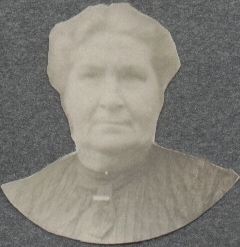
REMEMBERING GRANDMA
by Ruth Wheelock Matheny
"I
was pretty young when she died, and I have only two memories.
I always picture her as sitting on a throne
on the side of the living room! My other memory is an
unfortunate one: For some reason, I stamped my foot at her,
and I 'got it' from the whole family.
My
mother said that she was violently opposed to the use of
makeup by her daughters. When they were young ladies, she
would still stand by the front door with a damp cloth and
swipe the face of anyone wearing even powder!
They
were
a happy family, though, who made their own fun. They enjoyed
sing-alongs. My mother said she never learned to play the
piano because every time she tried to practice, one of her
brothers would hop on one foot, waiting for her to play the
next note!
I
know that some of them went with Grandfather Carey to the
Columbian Exposition in 1893."
